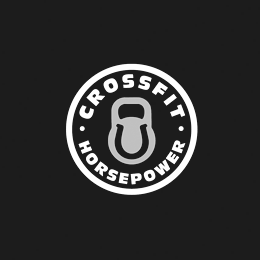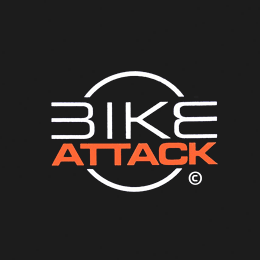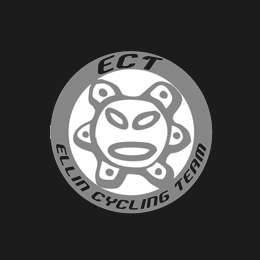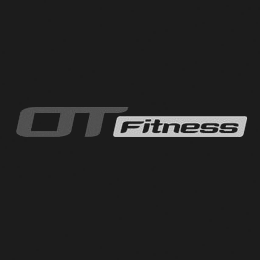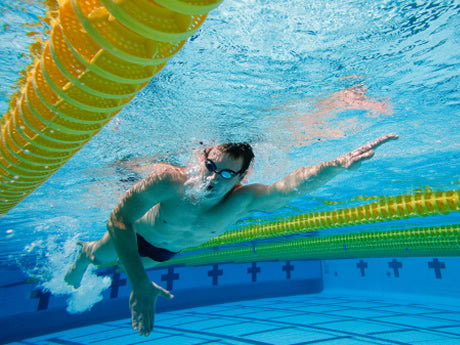Rock Climbing. This high adventure sport is both physically and mentally demanding. The risks you run in this sport can vary from minor scrapes and bruises to a few thousand foot drop, which typically leads to death. This risky sport means you have to have absolute control over your muscles as well as your mind, but the rewards can be spectacular.
There are a few different types of climbing you should be aware of if you are interested in getting into this sport.
1. Aid Climbing
Aid climbing is the ‘old school’ way of climbing. It is still very popular today, but is less common than other types of climbing. With Aid climbing, you use two ladder like pieces of gear which you secure into the rock and then climb up. Aid climbing is very dependent on the climber knowing how to place gear in the rocks so that each step is secure. It sounds easy, but remember, you are 2,000 feet in the air when you do this!

2. Sport Climbing/Trad Climbing
Sport Climbing is probably the most common form of climbing. You hook yourself to the rock you are climbing as you reach the top through ‘quickdraws’. Quick draws are two carabiners connected through a section of nylon webbing that allow the climber to secure the rope to the wall without much effort. There is a belayer at the bottom of the rope making sure there is enough slack, and when they get to the top, they place an anchor and climb up. With sport climbing, there are bolts drilled into the rock already, all the climbers have to do is make it to the next bolt and clip in!
Trad climbing is very similar. It refers to ‘Traditional’ climbing, where there are no bolts drilled into the rock. Climbers must use ‘cams’ to place gear in the cracks in rocks and trust that if they fall, the gear will catch them!

3. Bouldering
Bouldering is probably one of the cheapest forms of climbing (next to free soloing, but we’ll get to that) because all you need is chalk, shoes, and a crash pad in case you fall. (And of course some INVIGORADE) Bouldering is typically closer to the ground than Sport, Trad or Aid climbing. The climbs are between 8-20 feet tall. With bouldering it is you, the rock and a short fall. This form of rock climbing is focused on short powerful moves or extremely technical ones. Bouldering will definitely get you pumped up!

5. Free Soloing
Free soloing is most definitely the cheapest type of climbing out there. It's also the highest risk. Free soloing takes all of the physically challenging elements of bouldering and mixes it with the mental aspect of big wall climbing. Free soloing is climbing without any gear. Climbers who free solo bring a bag of chalk and their climbing shoes to the rocks and can climb anywhere from 200-3,000 feet up! See free solo extraordinaire Alex Honnald below doing what he does best in Yosemite.

Rock climbing is a very rewarding sport, but make sure that you start small and work your way up. It has been gaining more and more popularity in the recent years and local indoor gyms are everywhere now a days. So grab yourself a pair of climbing shoes, a little chalk and some INVIGORADE for support and go climb a rock this Summer!
Are you a parent? Then you probably seek out healthy activities that your children can enjoy with you! But those aren't always easy to come by, and we know that with everything else on your mind imagining new family-friendly activities weekly is easier said than done.
As usual, our Endurance Blog is here to help :)
Keep these following family fitness ideas in a safe place and pull out next time you want to involve the whole Brady Bunch in exercise that is sure to keep everyone happy, healthy, and united!
1. Biking
Kids not old enough to bike? Invest in a bicycle trailer or toddler carrier so that no one is left out! An easy way to feel the breeze and explore local neighborhood parks and points of interest along the way. Why not bike to brunch and then burn off the eggs and toast with a bike back home --the long way?
3. Tag, You're It!
You're likely not the only family you know who is interested in family fitness. Gather your neighborhood families for a game of tag at the local park or across the front lawns of your homes! (Live by the beach? Head down to the sand with picnic foods and make a day of it!)
4. Apple Picking
Or veggie picking, or strawberry picking...you get the idea. Research local farms or orchards and get out in the sun and stretch those arms while educating your children on the benefits of the fruits or veggies you're collecting. Bonus: The week's lunch and dinner menu just got easier by using all the fresh ingredients you just gathered! Wash them down with a cold INVIGORADE to refuel after a day out in the sun.
5. Create an Outdoor Obstacle Course
Obstacles could be anything! Cones, the sandbox, or even just physical activities like hopscotching to the next obstacle or a three legged race sprinkled in-between. Have each member of the family create an obstacle and before you know it, you've got yourself a course. We love this idea of tying ropes or string across tree trunks to create a unique obstacle! Thanks to the blog "Under The Sycamore" for sharing!

6. Video Games
No, not the kind that involve sitting or starring blankly at the screen as you collect coins for Mario (or whatever it is the kids play these days ;)
Play instead an interactive game like Kickboxing, Just Dance, or even bowling. These types of games are perfect for getting the heart rate up and even better for a rainy day or impromptu fitness hour after a family dinner.
What is your favorite exercise to do with your family?
We all have families of different sizes and ages, and we'd love to hear what has worked for yours. Share with us in the comments! From the INVIGORADE family to yours: #KeepItUp!
“Run Forrest Run!”
How many of you are sick of hearing that on your long days? Although it’s a minor annoyance, it’s not the only one when it comes to running.
Here are 5 really great ways to take care of yourself after a run! It is just as important as the run itself.
-
Refuel
Protein, Carbs, INVIGORADE. The three major food groups. Make sure that you give your body those much needed vitamins! You are burning a lot of energy during your run, and you want to minimize stiffness and fatigue. Having food about 30 minutes after a run can make all the difference.

-
Stretch
Your muscles are all warmed up from running, it is the perfect time to stretch them out. But do it gently! You don’t want to over stretch and create micro tears in the muscles of your legs. Stretching is the perfect way to make sure that when you wake up the next day, stepping out of bed feels great, instead of limping out of bed...
-
Ice Ice Baby
Ice. We can not emphasize this enough. Ice. If you notice that there is a place on your body that needs special attention today, maybe the up hills were harder on your calves, or the downhills made your knees feel weak, put an ice pack on it. Ice helps reduce swelling and can prevent injuries! So ice!
-
Cross Train
It’s ok to take a day off running and go for a bike ride too. If you are sore, biking, core work, weight lifting, or even just squats can really improve your running over all. Your body will thank you for giving your joints a rest for a day!
-
Massage
The most fun part about working out is how amazing the massages feel afterwards. Take of those stinky running shoes, enjoy that shower, and then massage out the muscles in your feet. Or if you have a foam roller, go gently over your thighs, and calves. Gently though! The foam roller can be intense for first timers, don’t be discouraged by the intensity of the massage.

So go out there! Do that half marathon you’ve been training for, and remember to take care of yourself after. Self care is an important part of any work out. #KeepItUp
Yes, it's that time of year: Get out your green attire and start shaking your shamrocks, because St. Patrick's Day has arrived once again!
If you're anxious to indulge in a little traditional Irish cuisine after your workout tomorrow, have we got the recipe for you. Thanks to our newest retailer, Bristol Farms (INVIGORADE on their shelves now!) you can learn how to make their delicious Wagyu Corned Beef for St. Patrick’s Day. Thanks for the recipe, Bristol Farms!
Bristol Farms Corned Beef & Cabbage
Ingredients:
3 lbs Bristol Farms Wagyu Corned Beef
10 small red potatoes
5 carrots, peeled and cut into 2 inch pieces
1 large head cabbage, cut into wedges
Directions:
Place corned beef in large pot or Dutch oven and cover with water. Cover pot and bring to a boil, then reduce to a simmer. Simmer approximately 50 minutes per pound or until tender.
Add whole potatoes and carrots, and cook until the vegetables are almost tender. Add cabbage and cook for 15 more minutes. Remove meat and let rest 15 minutes.
Place vegetables in a bowl and cover. Add as much broth (cooking liquid reserved in the Dutch oven or large pot) as you want. Slice meat across the grain.
Foregoing the beer so you can wake up Wednesday and proceed with your morning run? Wash this Irish goodness down with some INVIGORADE ~which of course you'll find with all the above ingredients at Bristol Farms :)
As they say in Ireland: Sláinte!

Running is amazing. The feeling you get from that natural high is unforgettable, and the cleansing power of sweating out of all your pores can make you feel like a new person. Literally.
But problems happen, injuries are inevitable sometimes but people still want to improve right? Right.
Here are 5 workouts you can do when you are not able to run.
-
Side shuffle
The side shuffle is like the first part of ‘The Time Warp’ but really fast and a lot longer. It’s just a jump to the left, and to the left and to the left and to the left. 10 times.
Place your feet a little bit wider than shoulder width apart and bend your knees slightly, almost like you are doing a squat. Chest forward and back straight. It’s just a step to the right, 10 times and in quick succession. Do 3-5 sets of ten on either side to help strengthen your butt, hips and thighs. The side shuffle can also improve your flexibility!
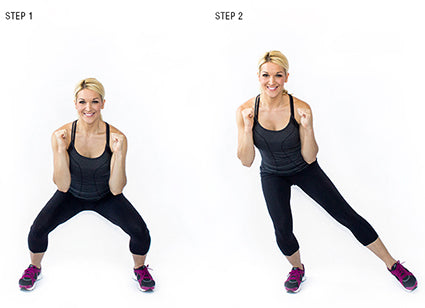
-
Side Hip Bridge
The side hip bridge is painful. But good for you. Do it.
Lay on your side with one arm propping you up, and your legs outstretched in line with your torso. Keep the hip facing down on the ground and your ankles touching, then at the same time as you lift your hips, lift your top ankle as well. You will see quickly that this is hard, but don’t give up! The Side Hip Bridge is really good for your IT band and core muscles. When you are running you want to make sure everything is centered and in line, tightening your core helps bring things into alignment. Do 20-30 reps on either side.

-
‘Clamshell’
Sounds like a hipster coffee shop, but is much better for your backside then all those sugary coffee drinks. The Clamshell workout is all about shaping those buns! Buns need to be shaped in order to run long distances. Don’t neglect the buns.
Lie on your side again, legs together and in line with your body. Then forget about your legs being in line and bend those knees. Take your top leg, lift the knee up at a 90 degree angle to your body (But keep those ankles together). It becomes obvious very quickly why it is called the ‘clamshell’ workout. 20-30 reps on either side.

-
Side Leg lifts
Stand holding on to something to keep your balance. Then, keeping your core tucked in and your spine straight, put your right hand on your right hip and lift your right leg parallel to your body. (Or as parallel as you can get) 20-30 reps on either side help strengthens your gluteus medius. A thick muscle that is largely covered by the gluteus maximus. It works to turn the thigh inward so that the knee points toward your other leg -- while also steadying the pelvis.

-
Hip Thrust
The Hip thrust is a glute exercise that improves your strength speed and power. And it just might help improve your optimal hip extension as well. Why do you care about that?
Your glutes are the most powerful muscles in your body and if they are underdeveloped your speed, power and strength will all be compromised. Want to improve your marathon time? Work the glutes.
Lie on your back and bend your knees. Bring your heels to almost touching your backside, and lift your hips to the ceiling. You can also add weight to increase difficulty. 20-30 reps and call it a day.

Even though you can't run (at the moment) you can still #KeepItUp with the above exercises!
Dan Czyzyk (pronounced Chizick) is an inconspicuous web developer living in sunny Santa Cruz California. Like most Santa Cruzians, he surfs, enjoys the sunshine and generally takes advantage of the beautiful redwood forests in the surrounding hillsides.
However, the INVIGORADE staff got together with him to discuss a part of his life, not normally exposed in such a beachy town.
Dan is an amazing downhill skier. This is what we found out.

Dan, shredding the gnar
INVIGORADE: So Dan, tell us a little bit about yourself.
Dan: (Laughs) The man the mystery, the legend. So much to say so little time! I’m a local web developer, who moonlights as a skier. I’ve lived in a lot of places with beautiful mountains, perfect for skiing. Squaw Valley, Big Bear, now I live near enough Tahoe that I go almost once a month.
INVIGORADE: When did you start your secret life of skiing?
Dan: Well I learned from my Dad when I was 11 years old, and he used to just shred down the mountain. It was family time, time to be in nature and time to challenge myself. But when I got into high school it became something that I could channel all of my teenage angst into. I wasn’t getting amazing grades in school, and I didn’t have anything else I felt I was really great at. I went to boarding school and skiing gave me something to feel good about, something to make me feel like I could excel, it was grounding.
I would look at a mountain, or a section of one, and people around me would say, “Woah, don’t do that.” or, “Be careful there.” and I wouldn’t even take a second to stop and think, I could just go and read the mountain as I was going and I would just fly down it. (EDITORS NOTE: We suggest downing a healthy serving of INVIGORADE before and after shredding this hard on the mountain)
INVIGORADE: So where are you going skiing now that you are all grown up?
Dan: Well now a days I can make it up to Tahoe for a weekend without too much trouble. I will get a season pass and go about once a month. I recently took my girlfriend skiing for the first time, shes never been before and it was great to share that part of myself with her.
Unfortunately now that I’m not 19 anymore, I’m more prone to injury. The harder I ski, the more of my meniscus I tear and the more surgeries I need.
INVIGORADE: Yikes, does that mean when you ski now you really let up?
Dan: (Laughs) Well yes, but if I go out with someone else who is really good I can’t help myself. There will always be a part of me that enjoys the thrill enough to ignore my knees for a day. Plus, it hurts me more to go up there and ski below my skill level then to give it all I’ve got.
INVIGORADE: Wow, you really love skiing. Can you tell us why?
Dan: I really connected with skiing from a young age. I felt lost an unappreciated when I was younger and skiing really connected me to myself. I could reflect on life and be by myself with the mountain. It was my mountain during that time and I could go anywhere and do anything with skiing. There were so many challenges that I could take on and be successful, and I think that is what it is really all about. Challenging yourself and coming out the other side feeling like a winner. Plus it is absolutely beautiful out there.
INVIGORADE: Alright, so do you have any advice for people who are just getting into skiing?
Dan: Yeah, actually I do. The obvious stuff is take lessons and practice. Practice, practice, practice! Challenge yourself, try a run that is harder than you are currently doing, and just know that the more you practice the better you will get.
But there is something else I want to tell people who are just getting into skiing. I used to ski with this guy Harold Maartman, hes a telemark skier from Norway, and he is really really good. I mean I saw him jump off of a 110 foot jump one time, that blew my mind.
But he used to tell me, ‘Pain is temporary, glory is forever.’ So I guess thats what I want to tell new skiers, pain is temporary, glory is forever.
Thanks for the chat, Dan! #KeepItUp on those slopes (although they may all be melted by now!)
Do you ever feel like you just don’t have time to get in any solid exercise? You know the feeling: Work all day, drive home and the thought of making it to the gym or going out for a bike ride just isn't as appealing as it was when you woke up that morning. Putting off exercise happens to the best of us, and being busy at work is not something you can always control. So here are 9 ways to incorporate fitness into even the most busy work schedule.

1. Set an alarm every hour. On the hour, get up from your desk and do 10 push ups! Or 2 minutes of wall sits. Or rest in plank position for 60 seconds. The possibilities are endless! This is also fun to do with coworkers, grab a friend and keep each other motivated every hour to do something different. Whoever can do the most buys the other lunch!
2. Walking and talking. If you are on the phone a lot for your job, make it a priority to get outside and move your body. Mobile phones have made it easier for us to do work remotely, so take advantage of your hour long phone call at 11 every day and go out for a stroll!
3. Install a pull up bar. If you happen to have your own office, putting a pull up bar across the door can be a great way to get a short and sweet workout in. Every time you walk through, do 3 pull ups and then get back to business.
4. Take a lunch break. All too often we sit at our desks, eating lunch and trying to write that report at the same time. Don’t put yourself through that! Take your hour lunch, and do a 15 full body workout. For example: (5 rounds) 10 push ups, 15 sit ups and 20 squats. (Check out The Traveling WOD for more "do it anywhere" workouts!) After your 15 minutes of burn, shower off, drink some INVIGORADE and get back to lunch. All this can be done easily in under and hour. Once you're done it's back to work!
5. Reward yourself with a walk. Every time you finish a project, complete that worksheet, or even just finish all your emails, reward yourself with a walk. Go down the block and grab a coffee, or walk to the park and call your sister. Getting outside more often isn’t just better for you, but you’ll move around a lot more during the day. This can help keep your body active and limber until the next time you hit the gym.
6. Take the stairs. This sounds really simple, and guess what: It is. If you work in an office building on the 5th floor, take the stairs to your office. Going up and down the stairs 3 or 4 times and know that you're burning about 7 times more calories than taking an elevator! #FunFact
7. Park farther away from your office. This is another one of those little tricks that we never really think about. Make yourself walk the extra quarter mile away from your place of work, it will increase the amount of steps taken in any given day and BONUS: It will also make it easier to find parking!
8. Stretch! This is one we almost never think about! Stretching is the number one way to avoid injury, and sitting at a desk all day can really mess up your back. You can do this any time you get up to go to the bathroom or get a drink or water. Take 30 seconds to do this: Roll your head in both directions. Roll your shoulders both directions. Roll your wrists out (typing can be very stressful on your wrists), link your hands behind your back and stretch out your chest muscles, touch your toes (or try!) and shake it out.
9. Stand and work. Finally, the number one way to stay active and burn calories at work. Just simply stand. Standing improves your posture, burns more calories, and protects your back, wrists and neck from injury.
Even if you cant make it to the gym after work, you can still maintain or improve on your fitness goals! #KeepItUp, to all you hard workers out there!
It’s summer time! This means water sports are in. We figured all of us could use a little refresher on how to do that perfect freestyle stroke, so the next time you do a lap around a buoy you can beat your PR!
Here are 5 things you should remember for good form, increased speed, and better results when swimming.
1. Where your head goes, you go.
When swimming, think of your body like a boat. Where the boat points, the boat goes. And your head is the very front of the boat, it tells the rest of your body where to go. So make sure to look forward, your forehead just below the surface of the water on the outbreath (under the water). Relax your neck muscles and upper back and make sure your body is parallel to the bottom of the pool/lake/sea floor. Your head should be at about a 45 degree angle, any higher or lower and you increase the drag on yourself and lose precious time.
2. Streeeeetttttch!
Picking an apple that is just out of reach, stretching your arm up as far as it will go! That’s the feeling you want when beginning the underwater pull of your stroke.
Arm in front of you, reaching about 15 inches away from your head, push down and swing through. That stretching feeling might be weird at first, but it will ultimately smooth out your stroke and increase your speed. Do it.
3. Hourglass is What We're Goin' For
Pulling yourself through the water with your arms is hard! Make it easier by doing the hourglass stroke. This means as your hand comes down into the water at an angle towards your body, then as your hand and arm become perpendicular to your torso, change direction and push your hand and the water around it out and away from your body. Not too drastic, but if you were to do both arms at the same time, it would look a lot like an hourglass shape.
4. It's All In The Hips. Sort of.
Rotating your body is crucial to the freestyle stroke. You wont get far by staying rigid and unmoving. Make sure that when your right arm is out in front of you (just went into the water) and your left arm is behind you (we will give you a minute to mime this now), your body should be rotated to the right, with your right hip facing down and your left hip facing up. As your right arm goes down and your left arm comes around, your hips and torso will rotate so that your left hip is facing down and your right hip is facing up. Remember: Hips don’t lie.
5. #KeepItUp. Duh.
Swimming is hard. We get it.
But don’t give up at the end of the game! Finish your strokes strong. Keep your arms fully extended behind you and your wrists rigid until your thumbs brush the outsides of your thighs below your swimsuit. Finish strong! If you give up on good form now, you might lose precious time by working harder to keep bad form.
And of course.
6. Fuel Up. Get some INVIGORADE in your system after a long swim. It may not seem like you sweat in the water, but you do!
Maximize your endurance performance and have fun this summer!
Who has apps? Everyone has apps! They are like pocket trainers and friends who keep nagging you (in the most motivating way possible) to come to the gym with them. Here are 7 apps that all INVIGORADE drinking athletes (aspiring or otherwise) should have on them.
Strava - Running long distances? Or short ones? And also biking? Are you super competitive? This app is the app for you. Strava can track your running, or biking activities, upload them to their community and compare your results to your past times, your friends and even pro athletes. It keeps track of your PR’s on hills or long stretches of road and lets you know when you’ve beaten them. It tracks distance, split times, calories burned, and can even track your heart rate! Strava is addicting and makes working out alone feel like a team sport.
Surfline - Never been surfing before? But you really want to start, you just can’t figure out when the waves are good or where to go? Surfline monitors the waves near you, gives you a report on wave height, if the tide is going in or going out, wind conditions, predicted surf height and wind speed for the rest of the day, and even shows you a live video footage of the beach. It’s every surfer's best friend.
Mountain Project - The Mountain Project app is the app for going climbing outdoors. This app gives you access to 100,000 + climbing routes. It tells you where there are climbing routes in the US as well as internationally. You can download hundreds of routes for one area, as well as how to get there, accommodations, comments from previous climbers, classic routes, and lets you know about access issues or potential hazards. It is perfect for beginners and seasoned rock climbers to get themselves out of the gym and on to some real rock!
Lose it! - This list wouldn’t be complete without a nutrition app would it? Lose it! is the most helpful app for people trying to watch what they are putting in their bodies. It identifies your current weight loss or weight maintenance goals, your current weight, height, and gender and then helps you craft a meal plan to meet these goals. Unlike other weight loss apps, it doesn’t just focus on weight. It also focuses on macronutrients, sleep, exercise, and measurements. It also lets you scan the barcodes of your food and inputs the calories, making calorie counting easier than ever. If you have nutrient related goals, Lose it! is the app for you.
Jetfit - This day and age we are all about big data. How many calories do we eat? How many to we burn for this much time? Whats the best way to build muscle? How many minutes have we been working out this month? We even get into the seconds of time we improve on our PR’s. Jetfit is like a personal trainer that knows everything about your workout routine. You can monitor your progress, design new workouts with over 1300 to chose from and get statistics from the workouts when you are done. Big data is your friend.
The Seven Minute Workout - For the busy bees out there, The Seven Minute Workout is a great way to get a full body workout without taking too much time out of your day. The app speaks to you and tells you how many reps to do, when to switch and how long to hold on. It isn’t the best if you are looking to improve, but if you need some easy fitness maintenance this is the app for you.
Pact - Want to make money and workout at the same time? Sounds awesome right? Well there is a catch! Pact is an app that keeps you going to the gym, or you will get fined a certain amount of money. You link your bank account to the app and when you do go to the gym you get cash from the people who are not going. But! If you don’t go you get that money taken out of your account and it goes to someone else! Tricky tricky.
Let us know which fitness app is YOUR favorite in the comments below! #KeepItUp
Last week we wrote about the differences between a Triathlon Sprint, Olympic, Long Course and an Ironman, but how do you even start training for them? There is a lot of running, swimming and biking involved as any triathlete will tell you. But there is another key ingredient to training that might not be obvious right away: Eating.
Keep a food log: This is a great way to track your eating habits, notice that you have a double Mocha Frappuccino around 3 every work day? Or that after a big meal you just have to have ice cream? Make sure you track how you are feeling as well, this can help you recognize coping strategies for stress or anxiety. Cookies are great, but not as a way to combat stress.
Carbs: Remember to CARB UP. This is not a time to be gluten free or paleo. You need your carbs before and after an intense workout, they are your body's preferred fuel source and you want every gram of carbohydrate you consume to be utilized as an immediate fuel source or to restore glycogen levels—you don't want it to be stored as fat. So carb up before and after a work out!
Fruits and Veggies: Don’t forget the important stuff! Fruit is full of antioxidants and vitamin C which will keep you healthy for the training season. Veggies are full of fiber and other vitamins that your body needs to draw on during intense workouts. Remember, you are putting your body through new and intense experiences, give it the fuel it needs to protect itself.
Recover right. Consume half a gram of carbs per pound of body weight, and 15–20 grams of protein within 30–60 min after training sessions or races.
Before the race: Eat a healthy balanced breakfast 2-3 hours before the race. Your body needs time to digest and take on nutrients before you start. You don’t want to be full and bloated for the race, but you also don’t want to be hungry. The 2-3 hour rule is right around the sweet spot.
During the race: You are definitely going to need sustenance for a triathlon. Some people don’t like to eat for a shorter distance like a sprint, but it is definitely recommended to bring something on board for Olympic, Long Course and Ironmans. During the Swim, you may only want to take on a sports drink (May we suggest INVIGORADE?) or some energy gel. The Bike part of the race should be when you fuel up with a sandwich, or some other form of solid foods. You can also have two water bottles on your bike, one for water (STAY HYDRATED) and one for INVIGORADE (STAY AWESOME). Finally the Run portion of the race is what will really deplete your energy. This is the time when you need energy and you need it fast. You don’t want to take on too much weight while you run, but packing some light weight fuel (dried fruit, INVIGORADE, a power bar) can fit nicely into your running belt and will help you finish this last stretch to the finish line!
So there you have it. Remember, practice makes perfect, find the foods that keep you going throughout the energy slumps, find what makes you feel strongest and #KeepItUp! (and hey, Mom's turkey sandwiches are what fuels you, no shame there!)

Our Partners
